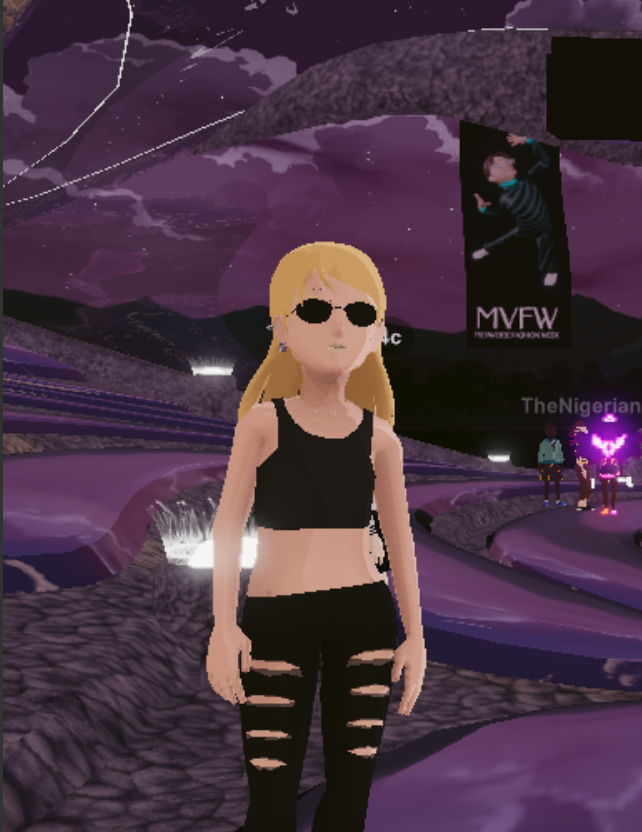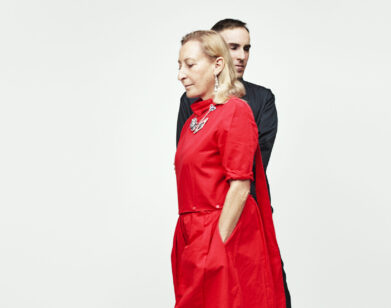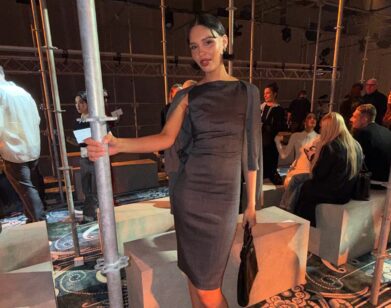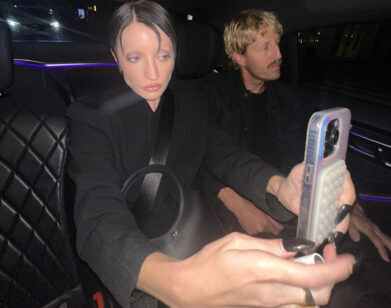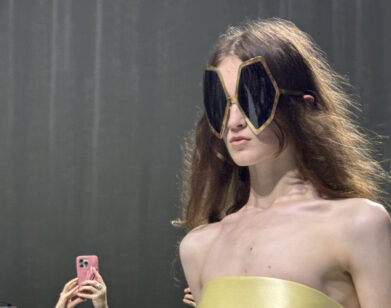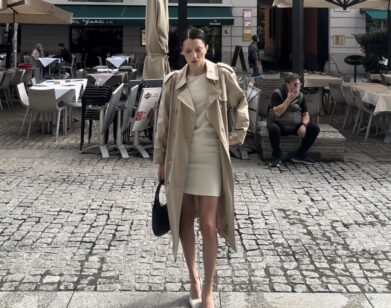TREND CEMETERY
Lost and Lonely at Metaverse Fashion Week
Welcome to Trend Cemetery, a new monthly column where our Senior Editor Taylore Scarabelli tries to make sense of meaningless micro-trends, luxury fashion, and street style in the age of social media. This time, she makes a trip into the metaverse to find out more about virtual fashion.
———
Last week, a press release touting a new kind of fashion week showed up in my inbox. From March 23 to 27, Metaverse Fashion Week would showcase digital Fall/Winter 2022 looks (made from pixels, not textiles) from IRL brands like Etro, Philipp Plein, Dolce & Gabbana, and Tommy Hilfiger, as well as virtual cryptocurrency-backed “couture” companies like Auroboros. Hosted by Decentraland, a newish decentralized virtual world/website, the week’s events promised to further democratize the fashion world, and introduce timid consumers and capital-hungry companies to the metaverse—whatever that means.
Since the start of the pandemic, hype around “virtual fashion” has picked up speed. From DIY Prada fits on Animal Crossing, to the rise of NFT collectables (cryptocurrency-backed virtual items) from brands like Gucci, we’ve seen endless iterations of digital goods designed to resonate with a new wave of consumers whose lives, according to marketers and trend forecasters, play out online just as much as they do in the physical realm. For brands, the metaverse is a new market wherein the sale of intangible goods can create real value. But it’s also a new way to advertise through gaming, not unlike the way major designers provide costuming for blockbuster films. Yet the metaverse, as imagined by companies like Decentraland, whose videogame-like platforms harken back to vintage computer programs like The Sims and Second Life, has little to do with how consumers are being influenced by virtual worlds today—especially when it comes to fashion.
When I first logged into Decentraland, I was thankful to be a crypto-native. Without a Metamask wallet (a browser plug-in for transacting with cryptocurrencies), I wouldn’t have been able to create my own avatar, or purchase skins a.k.a. digital outfits, to wear to the week’s events. To start, I gave my character a basic, all-black look: a crop top, ripped jeans, boots, blonde hair, and matrix-like glasses. I looked trashy, but it was the most “me” outfit I could scrounge up from the paltry set of freebees available (I didn’t spend any ETHs during he event, a decision I’m happy with in hindsight). After, I teleported to the most area in Decentraland, a plaza filled with a mix of avatars decked out in what appeared to be holographic, feather-like skins from Auroboros, and others like me, who looked plain and sounded bewildered in the comment stream. “Metaverse fashion week sucks!” one said. “Where are the fashion shows?” I replied.
I tried exploring the limited world. I went shopping in an empty Etro store (the clothing wouldn’t be available until after the metaverse fashion show), and visited a museum with pixelated artworks my eyes couldn’t bother to focus on. Time seems to pass slower when you’re in the metaverse, yet virtual fashion week seemed to follow a strict schedule not unlike its IRL counterparts, and somehow I had arrived before, or after the day’s events. Even when I clicked into programs that were “live now,” I landed in computer-generated voids reminiscent of abandoned shopping malls and modern inner-city developments. After what felt like two minutes—but might have been forever—I finished teleporting around and returned to the plaza I had arrived in, but everyone was gone.
My subpar time at MVFW probably had as much to do with my own lack of experience using Decentraland as it did with the fact that a computer game version of fashion week is unlikely to be as exhilarating as it is in-person. This became clear when I tried to log on the following day—my schedule timed to catch a talk on e-commerce and the metaverse—and my computer practically self-combusted. Aside from the fact that most fashion fans don’t have graphics cards fit for rendering video games on their computers, MVFW had another major problem: nothing seemed to offer much in the way of fantasy.
Today, fashion fans have a rabid appetite for virtual wares, but not in the way that most technology companies and corporations think. Rather than trading NFTs and outfits for in-game avatars, we find solace on major platforms like Twitter and Instagram, where an emerging crop of critics and influencers trade images of old runway shows and new editorials, actively documenting, collecting, and circulating fashion history in unprecedented ways. There, and on apps like Depop and Poshmark, people consume virtual clothing by saving images of the real thing to their wishlists and photo albums. In an essay from 2019, I argued that this form of virtual consumption was a new type of consumerism not unlike window shopping, but more accessible, and more enticing.
So why is that fashion corporations and new cryptocurrency-backed platforms are ignoring these trends? Part of the problem is that the platforms claiming the term “metaverse” don’t have the flourishing user base necessary to maintain the type of conversations and exchanges that keep most fashion fanatics hooked on sites like Instagram and Twitter. Like IRL events, we still want to be where everyone else is when we’re online, lest we end up in awkward situations like I did at MVFW. Still, creators can find ways to make NFTs more appealing. For example, they could sell never-before-seen images of Naomi in Gianni-era Versace, or curated mood boards from the internet’s most popular influencers. Or, at the very least, someone could come up with a virtual outfit that doesn’t look like a jellyfish or something a Simpsons character would wear. I’m begging you. Please!

